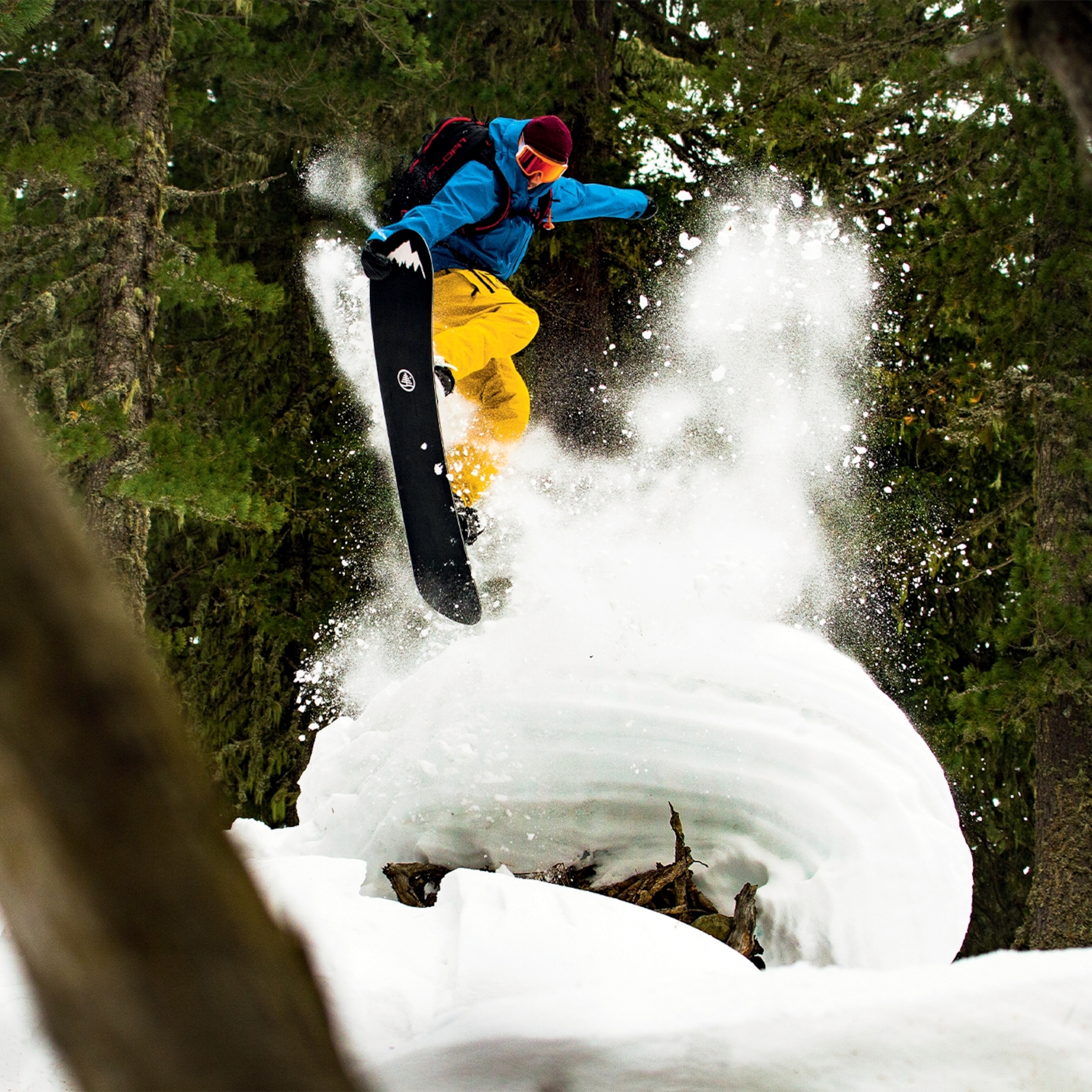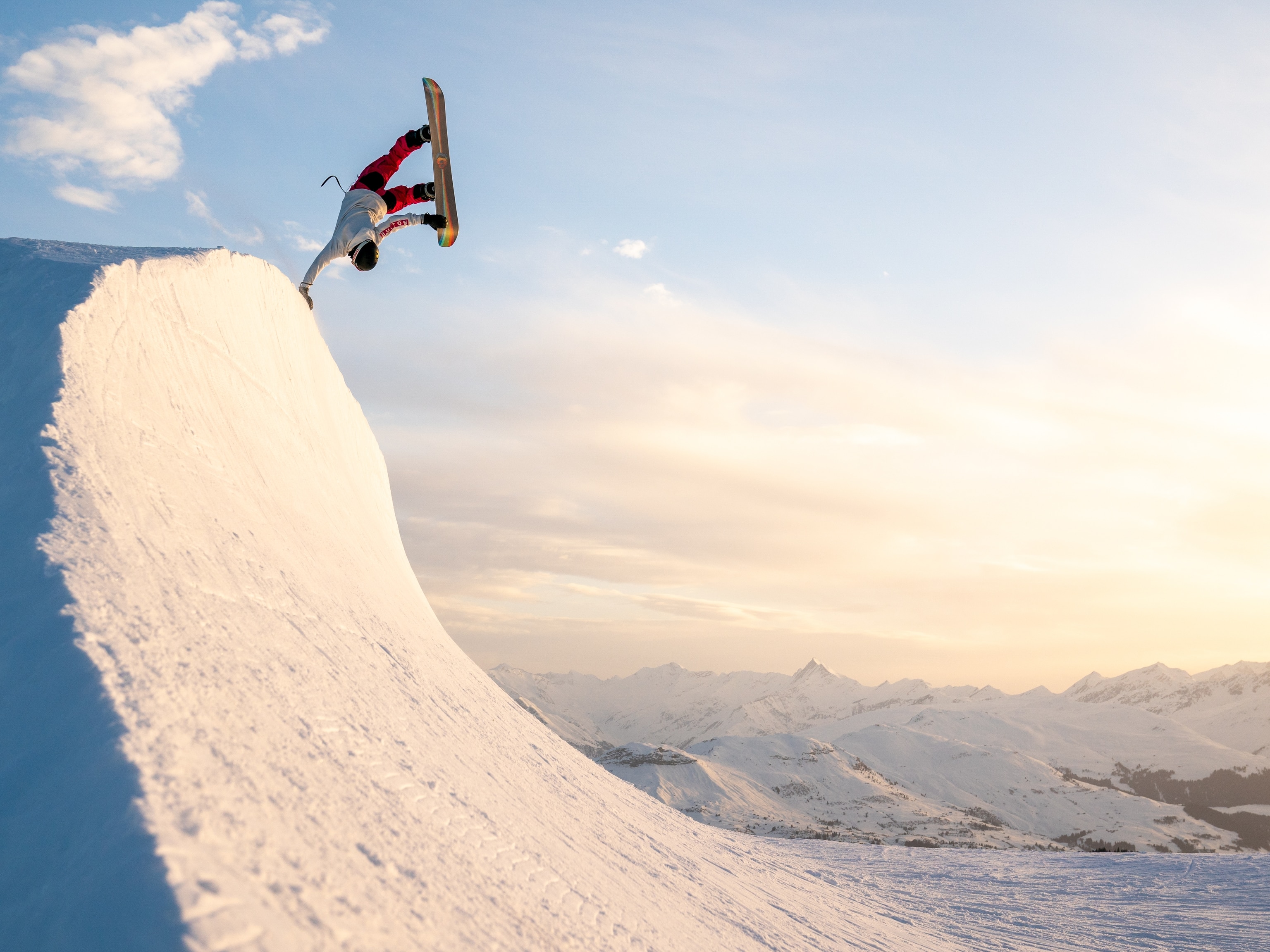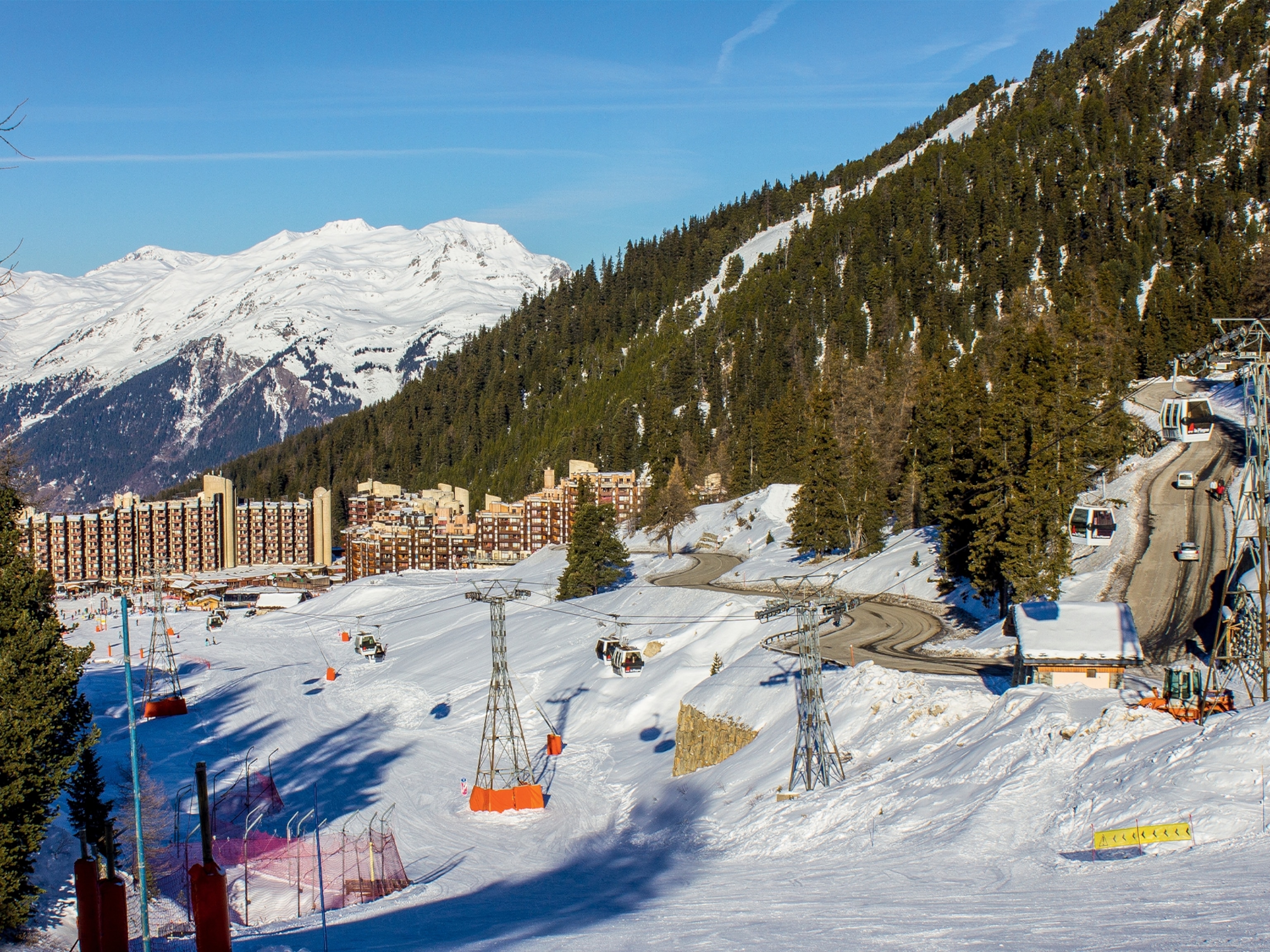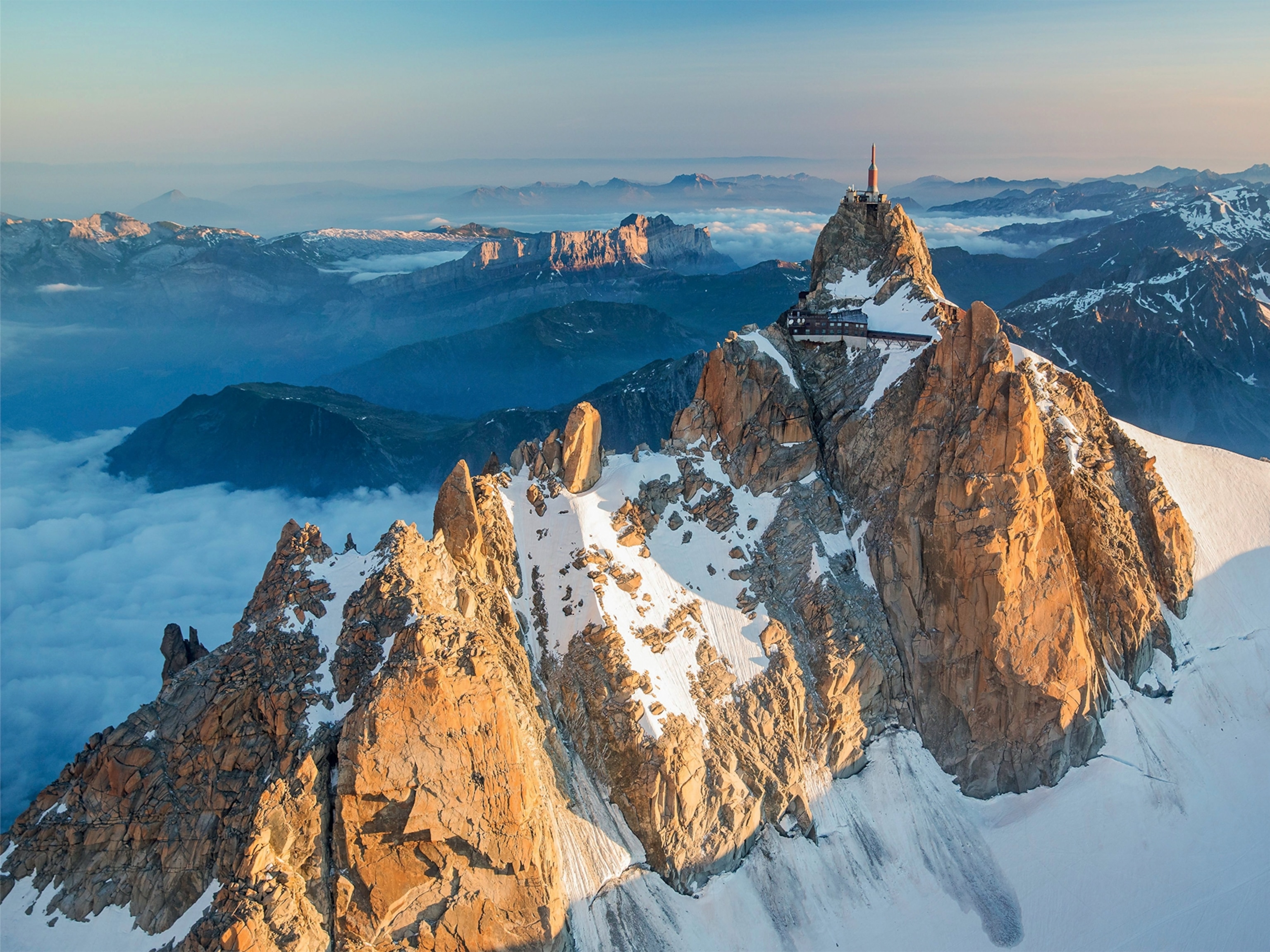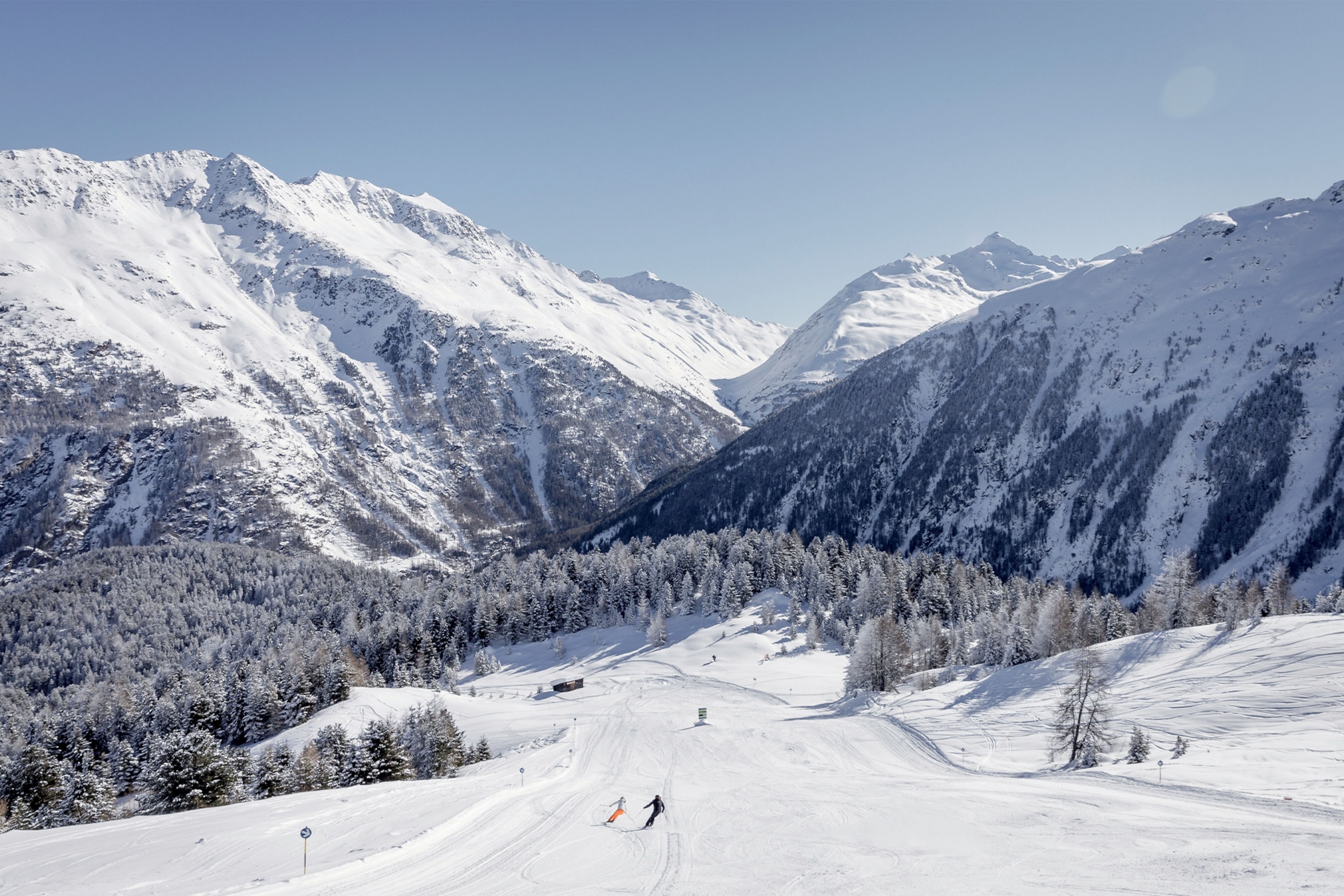
Why this Austrian Alpine town is forever linked to James Bond
Sölden, in Austria’s Ötztal Alps, has served as a James Bond location, but the real drama is found in its pistes, covering some of the world’s highest lift-accessible peaks.
Here at Ice Q today, all is serene. The horizon is lined with the jagged white peaks of the Ötztal mountains, the Italian Dolomites further in the distance. And all this wild beauty is set against the striking modern architecture of what’s perhaps Austria’s most famous ski restaurant, all sleek glass and steel. I can only imagine what it was like here when a full film crew were on piste.
Ice Q’s imposing glass box, reflecting the blue sky and snow, makes it an obvious James Bond location. The building loomed large as the fictional private medical centre, the Hoffler Klinik in the 2015 film Spectre, and that eye-catching outline is the first thing that appears as you reach the top of the 10,000ft Gaislachkogl summit in Sölden.
It’s little wonder this mountain setting caught the eye of a Bond location scout. Having opened in 2014, the building appears to be a stack of ice cubes, as named, expertly engineered to sit upon permafrost. Daniel Craig’s chase down the mountain, involving 4WDs and a twin-propeller plane, is not in my immediate plans though.
Dramatic as this summit is, as a starting point for exploring the slopes it really is just the beginning of Sölden’s impressive ski terrain: 90 miles, with 31 lifts, 30 huts and restaurants and two glacier ski areas. It’s the only resort in Austria with three 10,000ft peaks that can be explored with lift access.
My instructor, Peter Arnold, has been working on Sölden’s slopes for 42 years: “People like the wide pistes here, it’s very easy for beginners and intermediates while the runs from the top are more challenging.”
Spending his winters on the snow and summers at Area 47 — half an hour’s drive down the valley, it’s the largest outdoor leisure park in Austria — perhaps explains why Peter’s silver hair is the only giveaway of his age. Alpine living clearly has its benefits.
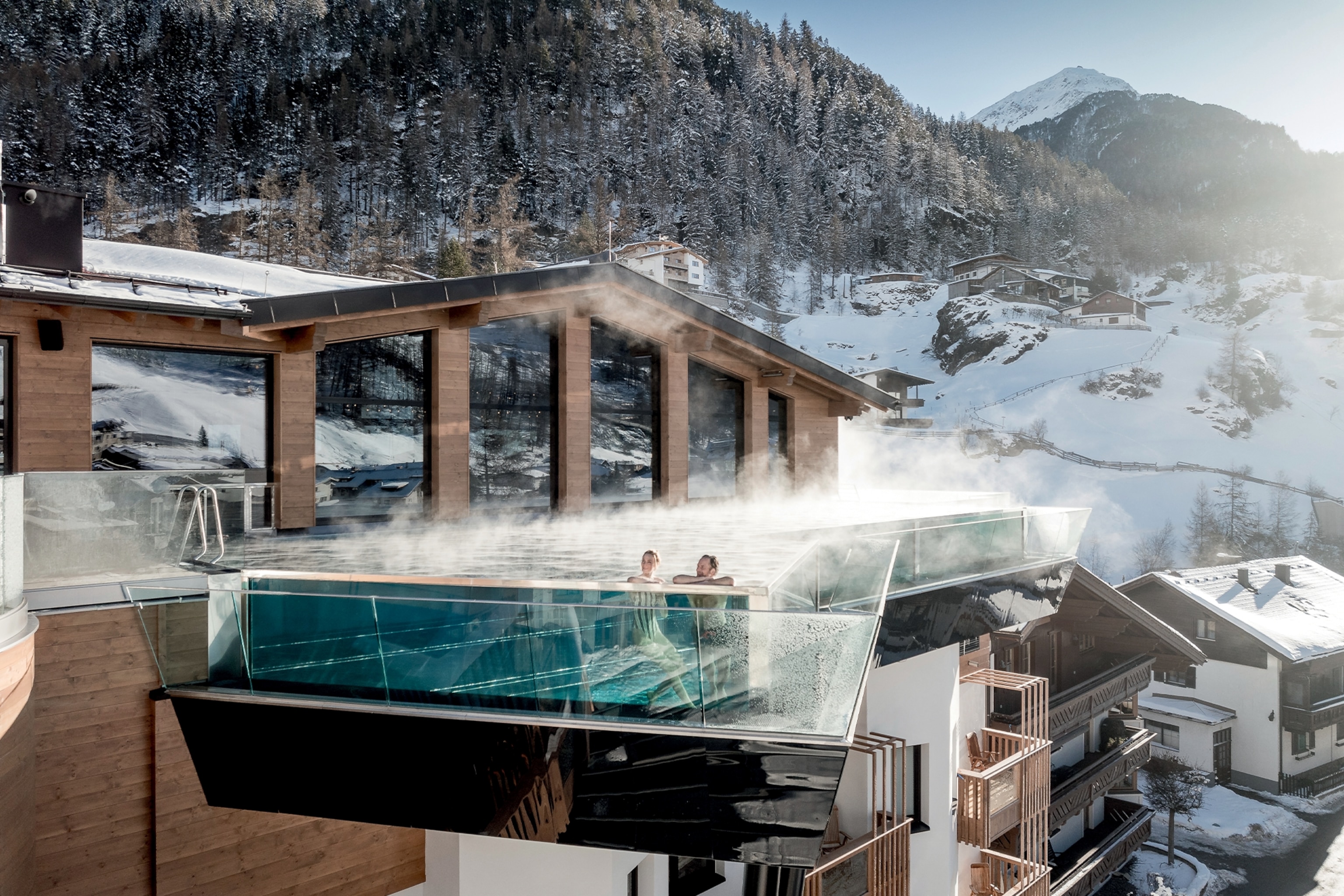
Those wide slopes are pleasingly quiet on a Saturday morning in early February — and the skiing is excellent. Sölden’s high altitude means good, regular snow — with the season running from October to May — and the weather right now couldn’t be more perfect.
One of the more challenging descents Peter speaks of is the World Cup run, beginning at over 10,000ft. With a maximum gradient of 65% we don’t start or, indeed, end there, but spend a few days taking in some of the gentle reds and easier black runs, finding our legs, before making our way to the Rettenbach and Tiefenbach glacier ski areas.
And while it’s sometimes difficult to take instructor advice on the slopes — “Bend your knees into the slope while facing down the piste, shift your weight onto your downward leg AND control your speed” — Peter somehow watches me, with eyes in the back of his head, and makes the necessary adjustments that improve my skiing without too much concentration.
But there’s no doubt it’s tiring. So, having found our ski legs and subsequently lost them again, we made our way to Ice Q for lunch. Here, we’re not greeted by a prolytic digestive enzyme shake, as offered to Bond in the film, but the fine dining is equal to the restaurant’s showstopping views: local char fish with pumpkin and black salsify; entrecôte of beef with portobello mushroom and smoked aubergine; and a perfect Austrian chocolate mousse to finish.
Back down in the valley, Ice Q’s parent hotel Das Central is a little more traditional. Occupying a central position in Sölden, overlooking the Ötztaler Ache river, the hotel opened in 1969; pine clad in the Alpine style. Yet ongoing extensions mean it has something of a Tardis-like quality. What appears to be a relatively small hotel now has several wings with 125 rooms.
Having added a multi-million-pound 2,000sq metre spa in 2023, spanning two floors, Das Central is the ideal tonic after a day on the slopes. Two vast new saunas, a sweeping indoor/outdoor infinity pool with views that range right up the mountainside, a whirlpool bath complete with its own sun terrace, six treatment rooms… those aching muscles needn’t stiffen up.

Das Central has form when it comes to showstopping engineering. One of the original founders of the hotel, Hans Falkner, was also intrinsic in establishing the cable-car that brought tourism to Sölden. Falkner, Hermann Gurschler and Martin Riml were the founders of the Bergbahnen Sölden mountain lift company, which made the slopes accessible for the first time in 1966 with the opening of a cable-car.
These three pioneers recognised the future potential of the ski industry, but as hoteliers also knew about the importance of hospitality. And the original 1969 stube restaurant (a traditional pine-panelled room) remains, albeit with an award-winning food and wine offering that surely surpasses earlier menus.
And it’s here, by chance, we meet Neal Callow, art director on several James Bond films, who’d attended a charity dinner the night before. Jack Falkner, Hans’s son, now the CEO and co-owner of the resort, makes the introductions.
Neal explains how the film crew navigated the mountain: “We used the real exterior of the building, the Ice Q, but we built a fake interior — we copied Jack and Hans’s beautiful architecture from up there and rebuilt it at Pinewood Studios. With a film set like that, you need space to put camera gear, lights and everything else.”
Back up the mountain, around the corner from Ice Q is 007 Elements, the permanent legacy of the Bond film. Inside a concrete bunker-turned-museum built into the mountain — it couldn’t be any more like a villain’s lair — Neal has helped create an immersive, interactive experience.
There are videos running across entire walls, original props and gadgets from the films, and spectacular views across the Alps. But ultimately, it’s those views from 10,000ft up that really keep people coming back to Sölden, albeit with some added 007 drama.
More info
iceq.at
central-soelden.com
soelden.com
This story was created with the support of Black Tomato and Das Central.
To subscribe to National Geographic Traveller (UK) magazine click here. (Available in select countries only).

